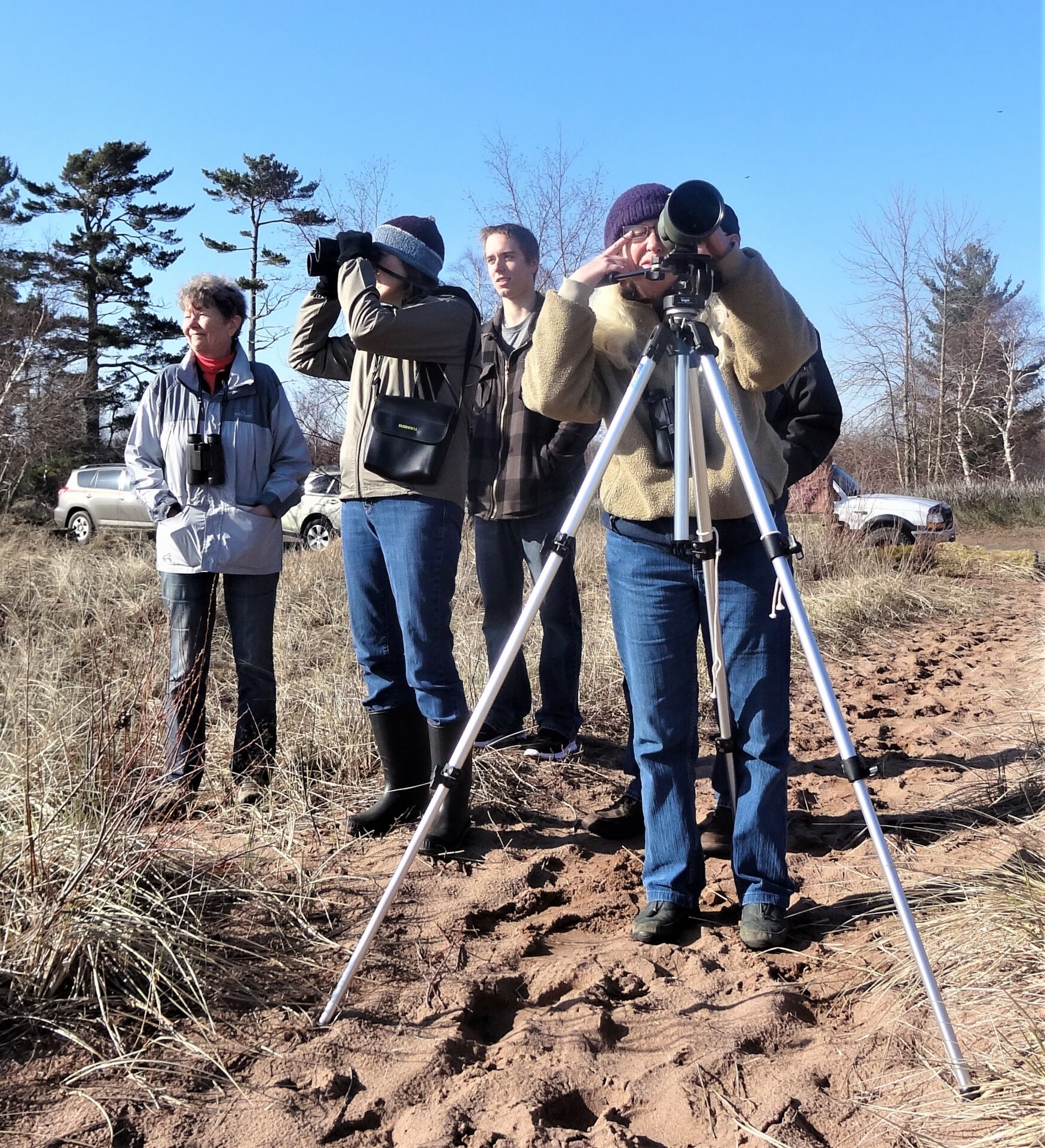Maritime archaeologists Tamara Thomsen and Caitlin Zant spend most of their time diving and mapping the shipwrecked schooners and steamships of the Great Lakes. But they’ve also found a slice of maritime history in submerged docks, massive brownstones and timber cribs.
As part of a project funded by University of Wisconsin Sea Grant, Zant and Thomsen have spent the last two weeks in the waters of Lake Superior, surveying the underwater remains of brownstone quarries at Stockton, Basswood and Hermit islands in the Apostle Islands chain. Way, way, back in the last part of the 19th century, these quarries were the beating heart of an extensive industry that supplied the massive stone blocks to architects in the Midwest’s major urban centers. When the brownstone industry abruptly collapsed, the quarries were abandoned and left to decay over decades.
The land-based parts of the Basswood Quarry have been surveyed and are already part of the National Register of Historic Places, and some archaeological work has been done at the Stockton and Hermit Quarries as well. But until now, the history lesson stopped at the water’s edge.
“The lines are definitely straighter,” said Zant, comparing the experience of sketching docks and underwater timber cribs to the symmetrical curves of a shipwreck. “It’s been strange getting used to drawing timbers, how they were fastened together. It’s different to see how they were constructed and to understand it. It’s an entirely new form, and that’s been a challenge.11
The survey team’s efforts have revealed much more than just the docks. During the survey of the Basswood island Quarry, the team found metal rail tracks used to move the brownstone, as well as an enormous hook once used to lift the stones onto the decks of ships. Not all the discoveries were structural: The team also found an ax head and pieces of derrick rigging as well.
The project’s biggest hurdle has been the fact that the docks and stone blocks are largely located in shallow water. Zant and Thomsen are accustomed to diving shipwrecks in water as deep as 300 feet. Most of the docks and crib remains are only in between 2-40 feet of water. Shouldn’t that make the survey easier? Not so fast.
“Getting accurate measurements has been a bit challenging,” said Zant. “Anytime the waves come in, it makes it very hard to keep your balance and stay in one place, and that makes recording challenging.”
And the waves have definitely come in, early, strong and often. Throughout the two-week survey effort, the team has battled uncooperative weather conditions, including several days with gale-force winds that made going out on the water completely impossible.
The days they were able to go out yielded interesting results. Zant said that one of the most fascinating artifact finds was a sizable stack of 40-45 brownstone blocks piled along the shoreline of Hermit Island, each of which was hand-chiseled with an identification number.
“When demand for architectural brownstone crashed, they just left them there,” said Zant. “You can actually see them from a boat offshore. They’re like a time capsule from 120 years ago.”
The dive team has already completed the detailed survey of the Stockton Island quarry docks, and, after a few more survey dives, will be able to do the same for the Basswood and Hermit Island quarry docks. Zant said she’s hoping to be able to expand their search, to explore the possibility that other artifacts may have been pushed deeper into the lake. Eventually, the sketches will be used to nominate the docks for inclusion in the National Register, and potentially, combined with existing land-based surveys at all three sites to nominate the entire area as a larger historic district.
For a project that seemed far simpler and straightforward than a shipwreck survey, the quarry project has managed to surprise the entire team.
“We didn’t know what to expect, or what we’d find under the water,” said Zant. “But it’s blossoming into something more.”





